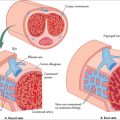chapter 1 Introduction to the concept of integrative medicine
This is a general practice textbook with a difference. It is designed to be a practical guide to integrative general practice.
One of the impediments to working in an integrative model is the lack of a common language between practitioners of different persuasions. For example, the concepts of ‘yin and yang’ and ‘chakra’ are not easily explained in medical school language. However, the fact that we may not understand the language, mechanisms or concepts of these therapies and modalities does not mean that they do not have a great deal to offer. As doctors become more familiar with different therapeutic options, so their familiarity with these terms will increase. Similarly, as doctors and other healthcare practitioners increasingly work together in teams or ‘virtual teams’, a common form of communication is emerging.
THE HEALTHCARE REVOLUTION
THE PAST
An ‘us and them’ mentality
The history of medical science has created a deliberate lack of integration of mind, body and spirit in the pursuit of one possibly narrow interpretation of the scientific model. Many doctors remain unaware of the evidence for CAM. This is partly due to scientific evidence for some modalities being relatively recent or published in other languages and so not readily available to doctors trained in the English language. There is often a false sense of confidence that all allopathic treatments are all strongly evidence-based. Past failed experiments like MUA (spinal manipulation under anaesthesia) for back pain, or bone marrow transplantation for metastatic breast cancer, are examples of non-evidence-based treatments that have since been abandoned. Most antibiotic prescriptions have little evidence to support them. Even the evidence for commonly prescribed antidepressants is under question. The impact of commercialisation on medical research and practice is such that patients and non-medical practitioners are questioning the foundations of conventional medical care.





